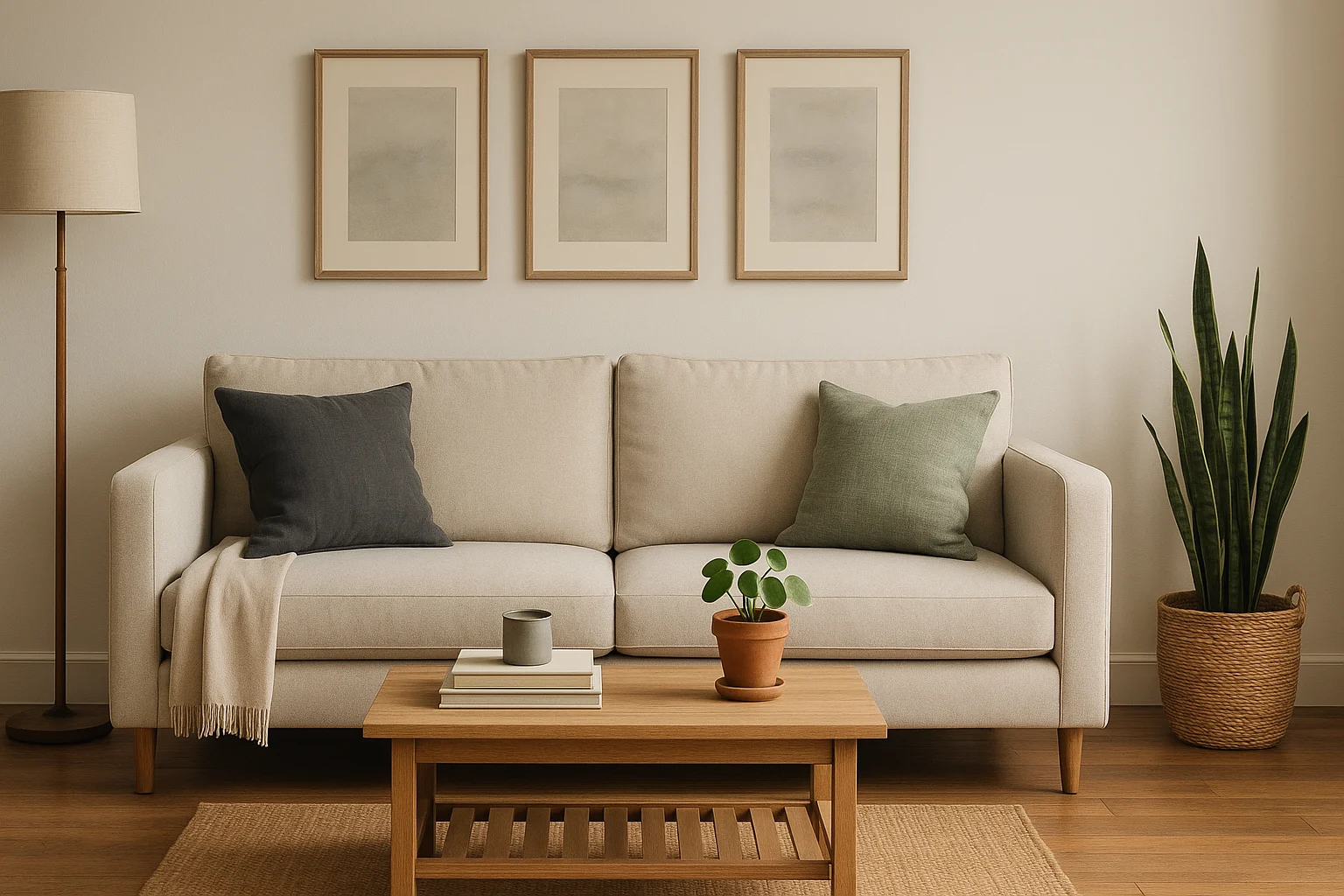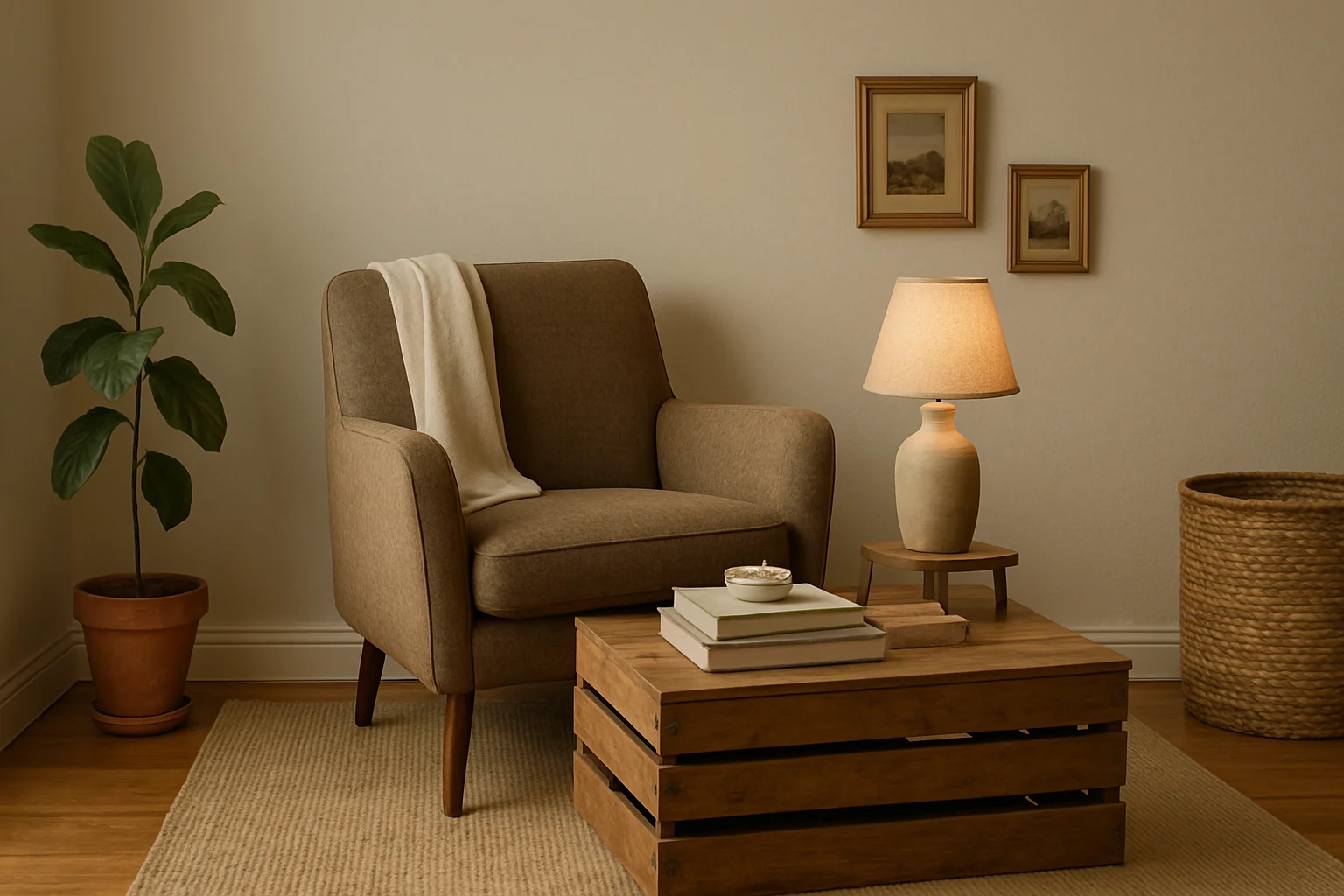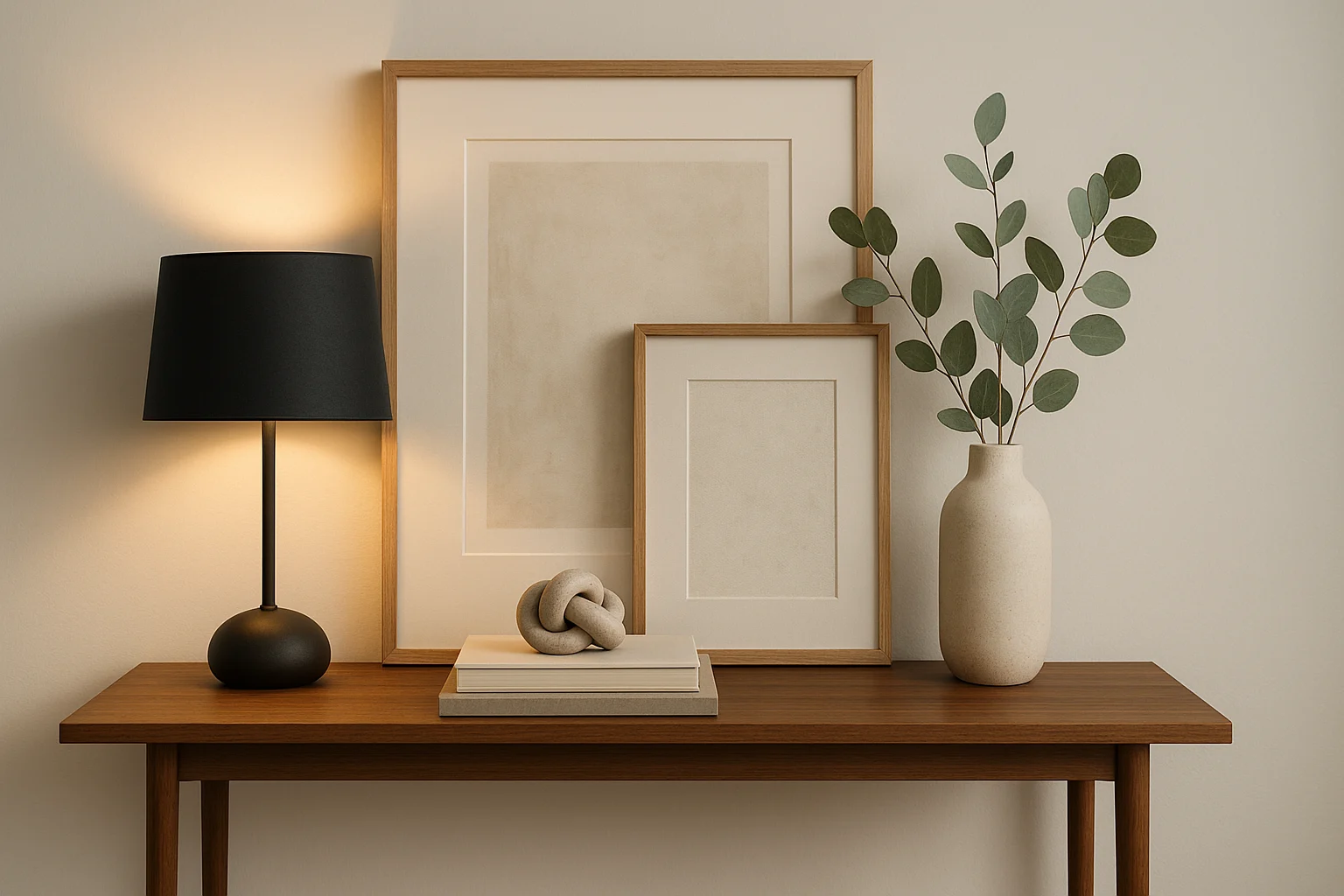
Want a home that feels like you without blowing your budget? This guide pulls together do it yourself home decor ideas that mix quick wins, weekend furniture flips, and renter-friendly hacks—so you can refresh any room at your pace and price point.
Who this is for: renters, first-time DIYers, and budget-savvy makers who want stylish results without special tools. By the end, you’ll know what to tackle this week, how to do it safely, and roughly what it’ll cost.
Table of Contents
- Key Takeaways
- Start Here: Beginner Projects
- Toolkit & Materials (Beginner → Advanced)
- Why DIY Home Decor Works
- Room-by-Room DIY Inspiration
- Deep Dive: Paint a Dresser
- Achieve the Expensive Look on a Budget
- Smart Sourcing & Upcycling Guide
- Common Mistakes to Avoid
- Frequently Asked Questions
- Conclusion
Key Takeaways
- Save money, add soul: DIY gives you custom style for less—perfect for budget home decor.
- Flip furniture fast: Paint + hardware = big transformations; lean on practical diy furniture techniques.
- Shop smart: Thrift, upcycle, and watch sales for supplies; create handmade home accents that feel bespoke.
- Renters win: Peel-and-stick, command strips, and fabric panels keep deposits safe.
- Start small: Build wins with quick crafts, then scale up to weekend projects and room refreshes.
Start Here: 5 Easy Wins for Total Beginners
New to DIY? Start here and stack quick confidence. These projects are low-cost and renter-friendly—ideal for frugal decorating ideas.
- Paint a Thrifted Frame: Sand, prime, and paint matte black or brass. Time: 45 min. Cost: $5–$10.
- Style a Coffee Table Tray: Books + candle + small plant. Time: 15 min. Cost: $0–$25.
- Stencil a Tea Towel: Use fabric paint and a large stencil. Time: 30 min. Cost: $6–$12.
- Plant Pot Glow-Up: Prime terra-cotta, paint, and seal. Time: 40 min. Cost: $8–$15.
- Command-Mounted Ledge: Shallow picture ledge for rotating art. Time: 30 min. Cost: $10–$20.
💡 Small wins = momentum. When you’re ready, try a simple diy furniture flip like a side table.
Craving more bite-size wins? Explore our craft projects for adults—cheap supplies, 1–2 hour builds, and creative upgrades that perfectly extend this section.
Ready to Pick One? Spin the Wheel!
Toolkit & Materials (Beginner → Advanced)
Gather a steady starter kit, then add tools as your projects grow.
| Category | Beginner | Advanced Add-Ons |
|---|---|---|
| Measuring & Marking | Tape measure, level, pencil | Laser level, square |
| Prep & Repair | Utility knife, sanding block (120–220), wood filler | Random-orbit sander, filler spreaders |
| Painting | Quality brush/roller, painter’s tape, primer | HVLP sprayer, lacquer topcoats |
| Fastening | Screwdriver set, small nails/screws | Cordless drill/driver, countersink bits |
| Safety | Glasses, gloves, mask, ventilation | Respirator cartridges, hearing protection |
⚠️ Stripping or sanding older finishes? Review EPA lead-safe practices before you start.
Why DIY Home Decor Works
Imagine a $20 thrifted table turned custom showpiece over a weekend. You save cash, pick colors that suit your style, and learn skills you’ll reuse. That’s the heart of do it yourself home decor ideas: lower costs, higher character, and the confidence that grows with every project.
Room-by-Room DIY Inspiration
Want an even deeper room walkthrough? See DIY Home Decor on a Budget: Room-by-Room Ideas That Look Expensive for layout rules, scale tips, and photo examples that complement this guide.

Living Room — 4 Options
- Quick Win (30 min): Style a tray with books, a candle, and a small plant. Budget: $0–$25. Pro Tip: Vary heights and textures for a designer look.
- Weekend Project (~4 hrs): Crate coffee table—add casters and a satin topcoat for durability. Budget: $30–$60. Pro Tip: Stain inside edges before assembly.
- Ambitious Build (1–2 weekends): Modern plywood media console with edge banding. Budget: ~$100–$150.
- Renter-Friendly: Large geometric wall using washi tape—big impact, no paint. Budget: $10–$25.
Spec: Crate coffee table — Time: 4 hrs; Cost: $30–$60; Tools: drill, sander; Skill: beginner; Finish tip: pre-stain conditioner + two coats water-based poly.
Bedroom — 4 Options
- Quick Win: Swap to cohesive pillow shams and add a textured throw. Budget: $20–$40.
- Weekend Project: Upholstered plywood headboard with neutral fabric. Budget: $50–$120.
- Ambitious Build: Slim wall-mounted nightstands with hidden cord notch. Budget: $40–$80.
- Renter-Friendly: Fabric panel “headboard” with command strips. Budget: $15–$40.
Spec: Upholstered headboard — Time: 3–4 hrs; Cost: $50–$120; Tools: staple gun, scissors, level; Skill: beginner; Install tip: use a French cleat and mark studs first.
Kitchen & Dining — 4 Options
- Quick Win: Style a simple centerpiece (tray + fruit bowl + greenery). Budget: $0–$25.
- Weekend Project: Open shelves with color-matched brackets. Budget: $40–$100.
- Ambitious Build: Slim rolling pantry from 1× lumber for tight gaps. Budget: $70–$120.
- Renter-Friendly: Peel-and-stick backsplash behind the range or sink. Budget: $30–$70.
Spec: Open shelves — Time: 4–6 hrs; Cost: $40–$100; Tools: drill, stud finder, level; Skill: intermediate; Safety: bracket spacing ≤ 24″; seal with wipe-on poly.
Bathroom — 4 Options
- Quick Win: Upgrade hardware (towel bars, hooks) for instant cohesion. Budget: $20–$50.
- Weekend Project: Frame your builder mirror. Budget: $25–$60.
- Ambitious Build: Narrow ladder shelf for towels with a wipeable finish. Budget: $40–$90.
- Renter-Friendly: Tension-rod under-sink curtain to hide storage. Budget: $10–$25.
Spec: Framed mirror — Time: 2–3 hrs; Cost: $25–$60; Tools: miter box/saw, wood glue; Skill: beginner; Finish tip: paint/stain before mounting; use construction adhesive.
Home Office — 4 Options
- Quick Win: Cable management (clips + velcro ties) and a desk plant. Budget: $10–$25.
- Weekend Project: Pegboard wall painted to match your palette. Budget: $30–$70.
- Ambitious Build: Plywood desktop on drawer units with a satin finish. Budget: $120–$220.
- Renter-Friendly: Command-mounted photo ledges for rotating art. Budget: $20–$40.
Spec: Pegboard wall — Time: 2–3 hrs; Cost: $30–$70; Tools: drill, level, 1/2″ spacers; Skill: beginner; Pro tip: standoffs create clearance for hooks.
Deep Dive: How to Paint a Dresser Like a Pro
- Prep: Remove drawers/handles. Clean with TSP substitute; rinse and dry.
- Repair: Fill chips with wood filler; sand flush (120→180 grit).
- Prime: Bonding primer in thin coats; scuff sand (220) between coats.
- Paint: 2–3 thin coats. Mini-roller for flats, angled brush for details.
- Protect: 2–3 coats water-based poly on top surfaces; light sand between.
- Style: Reinstall or swap hardware; line drawers with peel-and-stick paper.
💡 Ventilate well and honor the can’s cure times—durability comes from patience.
Pitfalls & Timing: Label drawers to keep fit aligned. Vacuum + tack cloth between coats to avoid dust nibs. Let primer dry per can, then scuff (220). Use thin, even paint coats; resist “one thick coat.” Align hardware with a jig or template so pulls sit perfectly level. Avoid high-humidity days. Allow 24–48 hours before reassembly and 5–7 days of gentle use for full cure on top surfaces.
For more detailed before/after walkthroughs—including paint, stain, and hardware swaps—see our DIY Furniture Makeovers: Paint, Stain & Hardware Swaps (Before/After).
Achieve the Expensive Look on a Budget
The Rule of Three
Group decor in odd numbers—three items with varied height, texture, and shape. Try a tall vase, a medium book stack, and a small sculptural object for balance.
Light in Layers
Combine ambient (overhead), task (table/floor lamp), and accent (sconces or string lights). A dimmer on at least one source instantly adds a high-end feel.
- 2700K = cozy (bedrooms, living rooms)
- 3000K = balanced (most spaces)
- 4000K = crisp task (kitchen, office, bath)
- Bonus: aim for CRI ≥ 90 and at least one dimmer.
Texture Stacking
Mix smooth + chunky + natural: a leather chair, knit throw, sleek ceramic vase, and a jute rug. The contrast reads “considered,” not cluttered—classic budget home decor magic.

Smart Sourcing & Upcycling Guide
Stretch your budget with smart finds and creative reuse—exactly how handmade home accents get their charm.
- Thrift Targets: Solid-wood dressers, mirrors with good frames, stools, ceramic vessels.
- Marketplace: Search “free,” “curb alert,” and misspellings (e.g., “desser”) for deals.
- Shop Your Home: Swap art, move lamps, and restyle shelves before buying.
- Material Stash: Keep leftover paint, knobs, and scrap wood in a labeled bin.
Search strings that surface deals: try misspellings (desser, dressor, credenzaa), “curb alert,” “project piece,” “needs TLC,” “as-is.” Filter within 10–15 km and sort by “Newest.” Check early morning and late evening when posts spike. Bring cash, straps, and exact measurements.
💡 “Potential over perfection.” A dated piece with sturdy bones is a prime flip for diy furniture.
Common Mistakes to Avoid
- Skipping Prep: Cleaning and sanding are non-negotiable for pro results.
- Thick Coats: Multiple thin coats beat one gloopy coat, every time.
- Mismatched Bulbs: Keep color temperature consistent across a room.
- Cluttered Surfaces: Curate, don’t crowd—leave breathing room.
- No Ventilation: Open windows, use fans, and wear protection when finishing.
Frequently Asked Questions
Conclusion
Pick one idea and start today. With these do it yourself home decor ideas, plus smart sourcing and simple techniques, you’ll save money, grow your skills, and shape a home that tells your story—one project at a time.
Next step: pick one idea, block 2 hours this week, and snap a before/after—you’ll build momentum fast.
This do it yourself home decor ideas guide is for general education. For persistent issues or safety concerns, consult a professional.